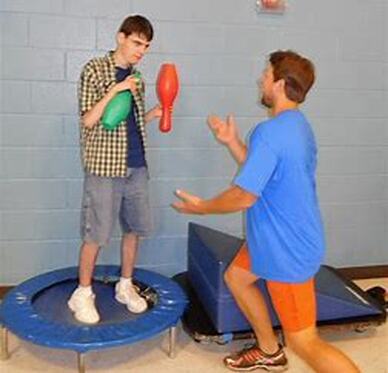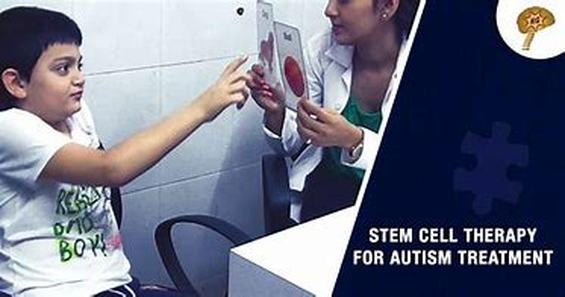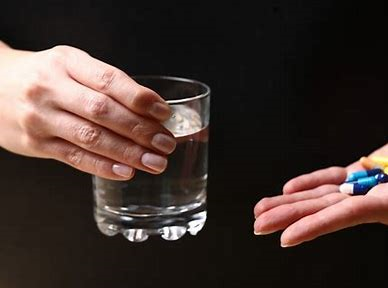What is the most concerning or destructive thing that is going on right now in your child’s world?
Luker, S. (2024) Who May Help?
UNIT 7– 10 CAMs
Section 10: CAMs Complementary & Alternative Medicine
PART 7 –
13. neuro-therapy
14. physical activity program
NOTE: PROCEED WITH CAUTION. Many Complementary and Alternative Medicine (CAMs) treatments are still very controversial and may even be dangerous. Before starting any treatment program, investigate thoroughly, and ALWAYS, ALWAYS talk to your child’s primary physician first.
Sicile-Kira, C. (2014) says that due to the nature of Autism, it is difficult to ascertain the cognitive level of people on the spectrum. Some or all of their senses are a100 times more sensitive than others and therefore they process the environment differently. More and more it is understood that there is a challenge with ‘output’. That is, they are NOT able to respond verbally to what they are thinking, or what they hear and understand.
She goes on to say that the field of neuroscience has grown tremendously in the last decade, giving us a greater understanding of the brain, the spinal cord, and networks of sensory nerve cells which are involved. We are learning how neurons, throughout the body relate to behaviors, reason, and emotions – all important to the understanding of autism. We recognize that the first step in gaining and knowing autism is to gather knowledge.
Louise, L. (2011) feels that feedback itself is built into our very reality. Things like temperature, digestive comfort, and fabric texture are all forms of feedback. My son Dar was a smelly, scary mess of a man. That is, until neurofeedback. After that, we could actually watch him learn to calm himself and communicate. The whole thing was happily surprising. Why had I been able to teach some of my children to perceivably change but not all? And, what made neurofeedback strong enough to help even an adult? Why was it not limited to the under five-year-old child?
Louise, L. continues, saying that she credits neurofeedback with doing amazing things – for my family and for everyone I work with. It is not as if you need a neurofeedback system to give feedback to your children’s brains. You give them feedback every time you express praise or disappointment.
If you feel more regulated, more balanced, more comfortable in your body, then it’s easier to learn. Changes in your brain lead to changes in how you experience your body, your ability to attend, and your desire to become ‘more’ than what you already are.
< My Thoughts > “…more comfortable in your body…”
Changes in your brain lead to the positive and negative ways the body interprets what it receives from the brain, which in turn determines the body’s responses.
Zhao, M. & Chen, S. (2018) found that physical activity plays a vital role in influencing people’s life from many aspects. And, that this is especially important for children with autism because physical activity improves their self-esteem, social skills, and behavior. It gives people positive lifestyle benefits for their future wellbeing and self-determination. They go on to say that there are two main kinds of therapy programs; land-based and aquatic-based aerobics. During these programs, when used as an intervention, the inappropriate behavior of participants was analyzed and targeted. The program was especially designed for improvement in social and communication functions. as well as sensory and feeling behaviors. The ‘natural environment’ of the program setting was also structured to help with enhancing interpersonal relationships and increasing the frequency of social interaction.
Parents felt that the 12-week physical activity program was found to be effective at improving social interaction and communication. And according to follow-up feedback from parents and teachers, the children were much more social and communicative. They were using greetings and interacting with peers more in everyday situations. Authors say it was also noted that non-verbal and even verbal children with autism didn’t know how to ask for exercise or physical activity. So, it’s up to parents and teachers to build it into their daily routine, as appropriate.
Bogdashina, O., & Casanova, M. (2016) believes that autistic individuals do not respond in the way we expect them to because they have different systems of perception and communication; senses, abilities and thinking systems. She says that sensory perceptual differences impact not only cognition, but acquisition of social and communication skill development, as well as physical activity. And, for the same reasons, sensory deprivation can lead to autistic-like-behaviors. Also, that a sensory memory, good and bad, can be created.
< My Thoughts > “…autistic-like-behaviors.”
Much of the current literature reflects the premise that children and adults with autism do NOT want to be isolated and anti-social. They seem to resort to those behaviors when overwhelmed and feeling trapped in their sensory-defense mode. Also, on the topic of ‘sensory memory’ being created, if it’s an unpleasant memory, then this may be the basis for a Post Traumatic Stress flashback moment.
Barger, B., et al. (2014) did a study in which they continued their predecessors’ investigation of the influence of personality or temperament on how children with autism express a response to their environment. “The Five Factor Model” they chose to use examines the following Natural Personality Model –
1. Extraversion (sociability) – positive emotions, amount of physical energy/activity, considerateness and thoughtfulness to others. A naturally outgoing child.
2. Agreeableness (social warmth) – compliance to directions from others, or stubbornness, antagonistic attitudes towards others. A naturally decisive child.
3. Conscientiousness (impulse control and planning) – organized and careful, achievement oriented, or attention deficit. A naturally impulsive or ‘planful’ child.
4. Neuroticism (negative emotions) – includes shyness, frequent displays of anger, negative emotions such as fear. A child stuck in the ‘terrible twos’.
5. Openness (interest in new things) – intellect and interest in learning, sense of imagination and curiosity. A naturally inspired child.
Within this model, researchers Barger, B., et al. wanted to discover how temperament reflects the way the child behaves. For instance, yet another layer of response can be reflected in terms of their latency, vigor, regularity, and intensity. They measured this by looking at the child’s activity level, bio-rhythms, reactions to novelty, adjustment to change, emotional reactions, moods, distractibility, attention span, and their ability to screen external stimuli.
< My Thoughts > “…child’s activity level, bio-rhythms…”
By mentioning a study of the Natural Personality Model, it brings into focus how complex introducing and deciding the effectiveness of a new skill or activity, such as a ‘physical activity program’, can be. Even if a person with autism is hyperactive, focusing his or her energy and activity to a particular skill may be challenging.
Luker, S. (2024) Who May Help?
UNIT 7– 11 CAMs
Section 11: CAMs Complementary & Alternative Medicine
PART 8 –
15. stem cell therapy
16. vitamin/supplements
UNIT 7 – REFERENCES
UNIT 7 – APPENDICES – FDA Food Additive Link
The Alternative and Complementary Treatments (CAMs), not sufficiently supported by medical literature, include stem cell therapy. Siniscalco, D., Sapone, A., et al. (2012) say that available treatments can be found based on the theory that stem cell transplantation could offer a unique tool to provide better resolution for autism. Stem cell therapy is said to have the potential for improving the effects of ASD, because Mesenchymal Stem Cells (MSC) have the ability to migrate to sites of injury and participate in the repair process. But these strategies are limited, partially because the exact causes of autism are unknown.
Aigner,S., Heckel, T., et al. (2014) contribute that autism is a ‘neurodevelopmental’ disorder with symptoms to include intellectual disability, seizures, anxiety, aggression, and sleep disorders. Current treatments are focusing on educational and behavioral interventions aimed at improving maladaptive behaviors and promoting social interactions. Because autism is possibly heritable, landmark studies are including the use of stem cells; both embryonic and patient-derived. It is proposed that these advances offer and opportunity to advance or at least help to understand the ASD pathology.
Mazonson, P., Kane, M., et al. (2017) measured conditions under which umbilical cord blood (UCB) might be stored for future use. They continue to say that millions of units of UCB are stored in private cord blood banks. Now the medical community is gathering data which could impact this need for stem cell storage. For example, the donor or the donor’s family may use UCB to treat conditions they may face in the years ahead; conditions such as Autism Spectrum Disorder.
Siri, K. (2015) says children with autism as a group have notoriously poor nutrition coupled with vitamin and mineral deficiencies. This may be due, in part to extreme eating habits, because they are notoriously picky eaters. Deficiencies are also likely due to a tendency towards malabsorption of nutrients.
U.S. Food (2010) found that ‘added’ food ingredients have been used for many years to preserve, flavor, blend, thicken and color foods, and have played an important role in reducing serious nutritional deficiencies among consumers. These ingredients also help ensure the availability of flavorful, nutritious, safe, convenient, colorful and affordable foods that help to meet consumer expectations year-round.
Adding vitamin supplement nutrients to a cereal employs a variety of techniques in the food fortification process. In general, those nutrients that are heat stable; such as vitamins A and E and various minerals. These are incorporated into the cereal itself; they're baked in. Nutrients that are not stable to heat, such as B-vitamins, are applied directly to the cereal after all heating steps are completed. Each cereal is unique. Some can handle more nutrients than others can. This is one reason why fortification levels are different across all cereals.
Food manufacturers are required to list all ingredients in the food on the label. On a product label, the ingredients are listed in order of predominance, with the ingredients used in the greatest amount first; followed in descending order by those in smaller amounts.
Note: Luker, S. (2024); UNIT 7 – APPENDICES – FDA Food Additive Link. U.S. Food & Drug Administration (FDA) (2010). Overview of Food Ingredients, Additives & Colors; Retrieved online from – https://www.fda.gov/food/food-ingredients-packaging/overview-food-ingredients-additives-colors/
Cannell, J. (2010) claims that concentrates of Vitamin D deficiencies during early childhood, and/or during the gestational period; especially in early pregnancy may play a part in autism. Also, that low levels of Vitamin D may come from lack of adequate sunshine. Either way, the author suggests that Vitamin D supplements could be given year-round if needed, because they are available and inexpensive and may affect autism symptoms.”
< My Thoughts > “…lack of adequate sunshine.”
Children and adults with autism may resist going outside. Our Sonny, who always seems to query… “What’s in it for me?” doesn’t mind going outside to get in the car. But, ‘going outside’ has to have a purpose, in his mind. For instance, going to the neighborhood park holds no interest for him. He doesn’t want to socialize, swing on the swings, nor get on any of the play equipment. So, going to the park to absorb the sunshine’s Vitamin D, must include either his videos, or food.
References:
Aigner, S., Heckel, T., et al. (2014). Human pluripotent stem cell models of autism spectrum disorder: emerging frontiers, opportunities, and challenges towards neuronal networks in a dish; Psychopharmacology; V231, p1089-1104.
Barger, B., Campbell, J., Simmons, C. (2014). Measuring Five Factor Personality Traits in Autism During Early Childhood; Journal of Physical Disabilities; Vol 26:6 p775-792.
Bogdashina, O., & Casanova, M. (2016). Sensory Perceptual Issues in Autism & Asperger Syndrome; eBook, 2nd Edition.
Cannell, J. (2010). On the Aetiology of Autism; Acta Paediatrica; V99:8, p1128-1130.
Louise, L. (2011). Miracles Are Made: A Real-life Guide to Autism; eBook Edition.
Luker, S. (2024); Know Autism, Know Your Child with < My Thoughts > by Sara Luker; Retrieved online from – www.sarasautismsite.com
Mazonson, P., Kane, M., et al.( (2017). Prevalence of Medical Conditions Potentially Amenable to Cellular Therapy among Families Privately Storing Umbilical Cord Blood; Maternal Child Health Journal; V21; p208-214.
Sicile-Kira, C. (2014). Autism Spectrum Disorder (revised): The Complete Guide to Understanding Autism; New York, N. Y.: Penguin Random House Company.
Siniscalco, D., Sapone, A., et al. (2012). Autism Spectrum Disorders: Is Mesenchymal Stem Cell Personalized Therapy for the Future?; Journal of Biomedicine & Biotechnology; V2012.
Siri, K. (2015). 1,001 Tips for the Parents of Autistic Boys; eBook Edition.
Zhao, M. & Chen, S. (2018). The Effects of Structured Physical Activity Program on Social Interaction and Communication for Children with Autism; BioMed Research International; V11, p13.
Note: DISCLAIMER – Autism ‘intervention’, as with the phrase ‘Early Detection / Early Intervention’, may simply mean to attempt an ‘action’, or attempt to ‘change a course’ or ‘trajectory’ of the person’s autism. Any expectation for a successful ‘change’ must have the cooperation of the participant, the parent, and/or the assigned therapist. Words such as, ‘intervention’, ‘treatment’, ‘therapy’, ‘service’, or ‘program’ imply ‘cure’, or ‘long-term’ positive effect. That is NOT my intention here, and all information is presented without intent or suggestion of status or effectiveness.
End of DAY TWENTY-EIGHT.
Note: Excerpts from the books – (13% indicates location in the Kindle version of the eBook, instead of page numbers).
Sharing of my website and BLOG Comments welcomed. Thank-you to those of you who have sent comments... much appreciated!
Regards,
Sara Luker




 RSS Feed
RSS Feed